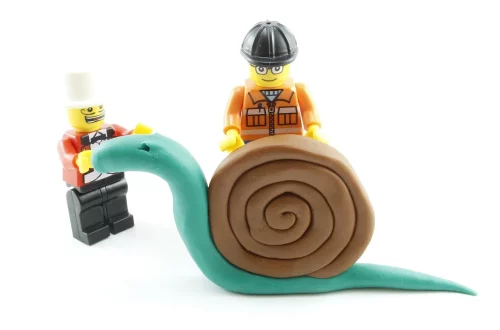
Chinchilla Persian Kittens: The Ultimate Guide to Caring for Your Feline
Caring for a pet is a rewarding yet challenging experience, especially when it comes to unique breeds like the Chinchilla Persian kitten. Known for their enchanting looks and gentle temperament, these felines are a sight to behold. With their striking silver fur and captivating green eyes, it’s no wonder that they have become increasingly popular among cat enthusiasts. However, owning a Chinchilla Persian kitten is not just about their beauty; it also involves understanding their specific needs and behaviors to ensure they thrive in a home environment.
These kittens require a unique level of care that encompasses their grooming, nutrition, and socialization needs. Unlike other cats, Chinchilla Persians have long, luxurious coats that need regular maintenance to prevent matting and skin issues. Additionally, they have distinct dietary requirements to sustain their health and energy levels. As such, potential owners should be well-informed about the breed’s characteristics to provide the best possible care.
This guide aims to delve deeper into the essential aspects of caring for Chinchilla Persian kittens, offering insights that will help you nurture a happy and healthy feline companion.
Understanding the Chinchilla Persian Breed
The Chinchilla Persian breed is a unique variation of the traditional Persian cat, distinguished by its stunning coat and personality traits. Originating from a blend of Persian and other long-haired breeds, Chinchilla Persians are renowned for their striking appearance. Their soft, silky fur has a shimmering effect, often resembling fine silk, while their large, expressive eyes can range from green to copper, adding to their allure.
Temperamentally, Chinchilla Persians are known for being gentle and affectionate. They tend to form strong bonds with their owners and can even be described as lap cats, enjoying the company of humans. This breed is generally calm and laid-back, making them suitable companions for families and individuals alike. They thrive in environments that offer love and attention, often seeking out affection from their owners.
However, it’s important to note that Chinchilla Persians can be sensitive to changes in their environment. They prefer a stable setting where they can feel secure. Introducing new pets or making significant changes in the household can cause stress for these kittens, so gradual introductions and a consistent routine are key to their well-being.
Moreover, understanding their unique grooming needs is vital. Chinchilla Persians require regular brushing to maintain their luxurious coats and minimize shedding. Their fur is prone to tangling, and without consistent care, matting can occur, leading to skin irritations. Owners should invest time in grooming sessions to create a bond with their kittens and ensure their coats remain healthy and beautiful.
In summary, the Chinchilla Persian breed offers a wonderful combination of beauty and personality. They require attentive care, understanding, and a loving environment to thrive. By appreciating their unique traits, you can create a fulfilling life for your feline friend.
Essential Grooming Techniques for Chinchilla Persians
Grooming is one of the most critical aspects of caring for Chinchilla Persian kittens. Their long, flowing coats require regular maintenance to keep them looking their best and to promote overall health. Proper grooming not only enhances their appearance but also helps prevent common issues such as matting and skin infections.
First and foremost, regular brushing is essential. It’s recommended to brush your Chinchilla Persian at least two to three times a week, if not daily. Use a wide-toothed comb or a slicker brush to gently remove tangles and loose fur. Start from the base of the coat and work your way to the tips, being careful around sensitive areas like the belly and behind the ears. This routine not only helps maintain their coat but also fosters a bond between you and your kitten.
Bathing is another important aspect of grooming, although it should be done sparingly—generally every few months or as needed. Use a mild, cat-specific shampoo to avoid irritating their skin. Thoroughly rinse the fur to remove all soap residues, as leftover shampoo can cause discomfort. After bathing, it’s crucial to dry your kitten properly. Use a towel to absorb excess water and, if your kitten is comfortable, a low-heat hairdryer can help fluff their coat.
Regular nail trimming is also necessary to keep your Chinchilla Persian healthy and happy. Their nails can grow quickly, leading to discomfort or issues with scratching furniture. Aim to trim their nails every two to three weeks, using cat-specific nail clippers. If you’re unsure how to trim your kitten’s nails, consult your veterinarian or a professional groomer for guidance.
Lastly, dental care should not be overlooked. Just like humans, cats can suffer from dental issues, so it’s good practice to brush your kitten’s teeth regularly with a cat-friendly toothpaste. This will help prevent plaque buildup and maintain oral health.
In conclusion, grooming a Chinchilla Persian kitten is a rewarding task that requires consistency and patience. By establishing a grooming routine, you can ensure that your feline companion remains healthy, happy, and stunningly beautiful.
Nutrition and Diet for Your Kitten
Feeding your Chinchilla Persian kitten a balanced and nutritious diet is crucial for their overall health and development. These kittens have specific dietary needs that can vary from other cat breeds, so understanding what to feed them will help them grow into strong and healthy adults.
Start by choosing a high-quality commercial kitten food that is specifically formulated for their age group. Kitten food is richer in essential nutrients compared to adult cat food, as growing kittens require more protein, fat, and vitamins to support their development. Look for foods that list meat as the first ingredient, as protein is essential for muscle growth and energy.
In addition to dry kibble, consider incorporating wet food into their diet. Wet food provides hydration and can be more palatable for kittens, encouraging them to eat more. It’s also beneficial for their dental health, as the moisture helps reduce plaque buildup. However, ensure that any wet food you choose is also high in protein and low in fillers or artificial additives.
Portion control is vital. Overfeeding can lead to obesity, which poses various health risks for your kitten. Follow the feeding guidelines on the food packaging and adjust the portions based on your kitten’s growth and activity level. Regularly monitor their weight and consult your veterinarian if you have any concerns about their diet or weight management.
It’s also important to provide fresh water daily. Always ensure your kitten has access to clean and fresh water to keep them hydrated, particularly if they are consuming dry kibble. Some cats prefer running water, so consider investing in a cat water fountain to encourage them to drink more.
Remember, treats should be given sparingly and should not exceed 10% of their daily caloric intake. Choose healthy options and avoid human food, which can be harmful to their health.
In summary, providing a balanced and nutritious diet is essential for the well-being of your Chinchilla Persian kitten. By focusing on high-quality food and maintaining portion control, you can set the foundation for a healthy and active life.
Creating a Safe and Stimulating Environment
Creating a safe and stimulating environment for your Chinchilla Persian kitten is vital for their happiness and development. Cats are naturally curious creatures, and providing a space where they can explore and play will enhance their overall quality of life.
Start by kitten-proofing your home. Remove any hazardous items such as toxic plants, small objects that can be swallowed, and electrical cords that could pose a choking or electrocution risk. Ensure that windows and balconies are secure to prevent accidental falls. If you have other pets, introduce them gradually and supervise their interactions to ensure that your kitten feels safe and secure.
Providing plenty of engaging toys is essential for mental stimulation. Chinchilla Persians are playful and enjoy a variety of toys, from feather wands to interactive puzzle feeders. Rotate their toys regularly to keep their interest piqued and encourage playtime, which is vital for their physical health and well-being.
Cat trees and scratching posts are also important additions to your home. Not only do they provide a place for your kitten to climb and play, but they also satisfy their natural instincts to scratch. This helps maintain their claws and prevents them from scratching furniture.
Moreover, consider creating vertical spaces in your home. Cats love to perch and observe their surroundings from heights. Installing shelves or providing cat towers can give your kitten a sense of security and entertainment, as they can watch the world from above.
Lastly, ensuring that your kitten has a designated quiet space is important. Chinchilla Persians can be sensitive to noise and chaos, so having a cozy corner with a comfortable bed will give them a place to retreat when they need some downtime.
In conclusion, a safe and stimulating environment is essential for your Chinchilla Persian kitten’s health and happiness. By taking the time to create a space that caters to their needs, you will foster a loving and secure atmosphere for your new furry companion.
In summary, caring for Chinchilla Persian kittens requires commitment and understanding. These beautiful cats thrive with proper grooming, nutrition, and a safe environment. By following these guidelines, you can ensure that you provide the best care for your feline friend, allowing them to flourish in your home.
**Disclaimer:** This article is for informational purposes only and does not constitute medical advice. If you have any health concerns regarding your pet, please consult a veterinarian for professional guidance.




